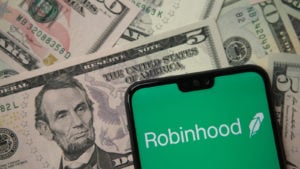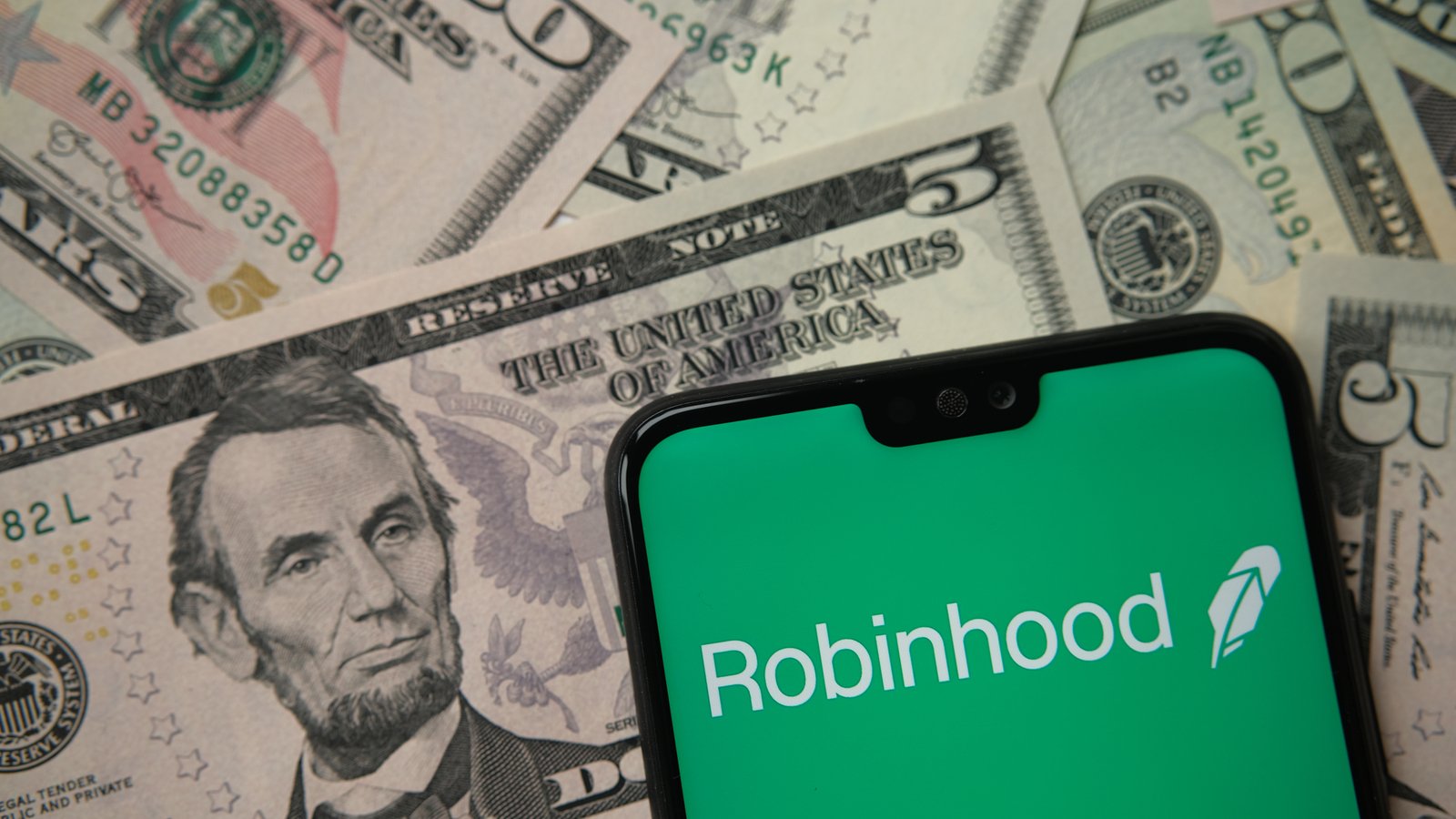Robinhood Markets (NASDAQ:HOOD) which just went public on Aug. 2, is unprofitable and not likely to see any net income until next year. The market might not exactly know this, especially since HOOD stock has risen over $20 since going public on July 29, closing at $34.82 on its first day.

As of Aug. 6, the stock has jumped 58% to $55.01 from Aug. 2. That means that HOOD stock now has an exorbitantly high price-to-earnings (P/E) multiple.
Robinhood Stock Is Not Cheap
For example, there are now two sell-side analysts who cover the stock. Their average estimate for earnings per share (EPS) is a loss of $1.40 for 2021 and a very low EPS of just 33 cents for 2022. So even by the end of 2022, a year and a half from now, HOOD stock is trading for 167 times earnings (i.e., $55.01/$0.33).
And think about this. Even before Robinhood stock skyrocketed up 55.5%, it was already trading for 107 times 2022 earnings (i.e., $35.33/$0.33). In other words, the stock was not undervalued by any means.
Well, maybe the stock is going to have huge earnings growth. After all, the turnaround from losing $1.40 this year to making 33 cents next year is quite an inflection in earnings.
The problem is that for 2023 those analysts estimate just 50 cents EPS and 85 cents for 2024. Now, we need to discount those future earnings to their present value.
For example, as HOOD is a fairly risky and volatile stock, we should probably use a 15% discount rate. This implies that investors would want to make at least 15% annually if they were to invest in Robinhood. Here is what that means from a practical standpoint. The present value discount factor for earnings in 2023 (2.5 years from now) at 15% is 70.51% and for 2024 (3.5 years from ) is 61.31%.
So this means that the present value of 2023 earnings for Robinhood is just 35.3 cents (i.e., 0.7051 x $0.50), and for 2024 it is 52.1 cents (i.e., 0.6131 x $0.85).
This implies that the present value P/E multiple for 2023 is high at 155x (i.e. $55.01/$0.353) and for 2024 is 106 times. In other words, the adjusted P/E ratios are still very high, given the poor growth outlook for Robinhood Markets.
Robinhood’s Issues
Analysts are not all that impressed that 81% of the brokerage firm’s earnings come from one source — transaction fees from market makers, rather than commissions. In other words, they feel that the quality of earnings isn’t great.
Robinhood gets paid for routing order flow to market makers which, in the end, seek to make money from getting slightly better spreads from customers’ stock and crypto orders. This is called Payment for Order Flow (PFOF), which the company clearly elucidates on page 1 of its latest prospectus.
At first, this seemed like a brilliant move. Robinhood pioneered commission-free trading as a result since they no longer needed to rely on commissions. But very quickly much of the brokerage industry emulated this move and essentially took away the guts of its “moat.”
Moreover, Robinhood adamantly admits in its prospectus the SEC is reviewing this type of revenue line. Here is what they said:
“In addition, PFOF practices have drawn heightened scrutiny from the U.S. Congress, the SEC and other regulatory and legislative authorities. These regulators and authorities may adopt additional regulation relating to, or any bans or limitations on, PFOF practices as a result of such heightened scrutiny or otherwise pursue additional inquiries or investigations relating to PFOF practices.”
For example, Citadel Securities accounted for 34% of its revenue in 2020, as seen on page F-10 of its prospectus. Robinhood also lists two other market makers with 28% of its dedicated revenue. That is a huge concentration in a few customers.
Moreover, as the New York Times pointed out in its Dealbook column by Andrew Ross Sorkin on Aug. 7, critics of PFOF say that this type of revenue is a conflict of interest. The brokerage firm no longer puts its clients first as a fiduciary duty. It needs customers to trade more to increase its revenue. If it used commissions, it could raise or lower fees to affect revenue. The Times article also points out that there are numerous lawsuits listed in the prospectus. The costs of defending against these suits may also be weighing down earnings.
What To Do With HOOD Stock
Defensive investors will likely want to wait for the company’s Q2 earnings due out on Aug. 18 before making a major move. Analysts will also likely update their projections by then as well.
Until then, HOOD stock looks to be way too expensive.
On the date of publication, Mark R. Hake did not hold a position in any security mentioned in this article. The opinions expressed in this article are those of the writer, subject to the InvestorPlace.com Publishing Guidelines.
Mark Hake writes about personal finance on mrhake.medium.com and runs the Total Yield Value Guide which you can review here.
